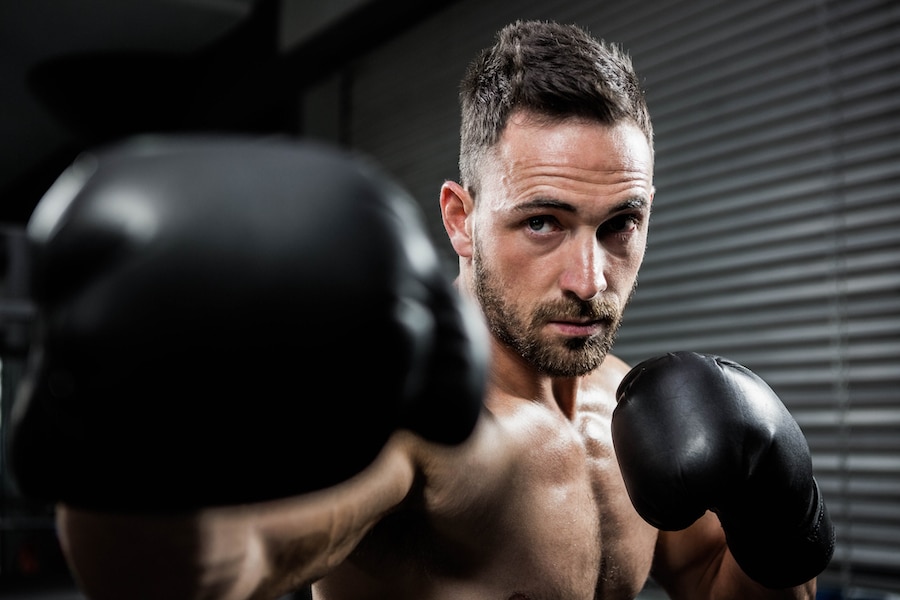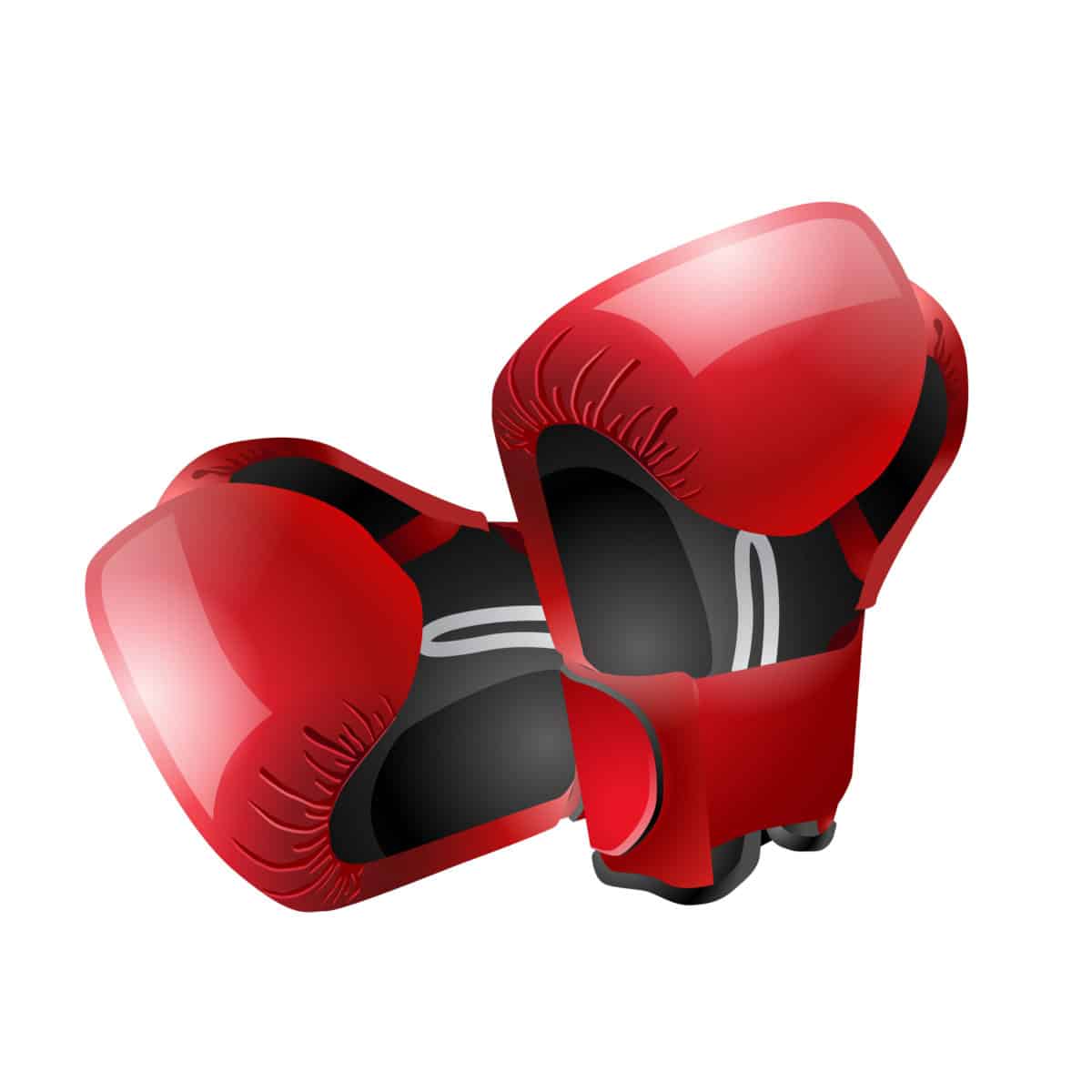Boxing training requires intense physical preparation at a high level. The boxer must improve his punch and build power to develop his muscles and his speed of execution. The exercises which one finds are the pumps, the abs, but also a solicitation of the pectoral and the triceps. For that, it can use dumbbells and apply a method of load contrast: i.e. to take a heavy load then a light load as quickly as possible, without recovery. That will support the muscular development and to keep a maximum rhythm of execution.
In order to work at the level of bodybuilding, the boxer does not need much equipment:
- boxing gloves
- a skipping rope
His other accessories will be used during boxing fights, especially to keep his balance and protect himself: mouth guards, boxing shoes...
How long does a boxer train?
The boxer can train in a gym and do group classes. Depending on his physical condition, the sporty trains between 2 and 5 hours in a weight room, five times a week, for the most competitive. It depends on his level, if it is for pleasure he will train for the passion of this sport and if it is to make a career, he will devote more time. He will be able to have two days of rest per week. Warm-ups and stretching are also important, with long recovery times. Overtraining can lead to injury.
Here is an example of a boxing class workout:
- Jogging and squats: 30 minutes to an hour
- Warm-up: about ½ h
- Exercises on a punching bag: 30 minutes to one hour
- Technical exercises: about ½ h
- Free fight : about ½ h
- Strengthening of muscles: about one hour
- Recovery, abdomen work, stretching: about ½ h
To find a training rhythmThe boxer can train in a team: this helps him to know his limits and to work on his endurance. This will allow him to give the maximum on the ring.
What are the essential bodybuilding exercises to be a good boxer?
In his weight-training programA boxer needs to perform essential exercises. He needs to strengthen his muscles, work on his joints and upper body. The objective is to develop breath, endurance, precision and punching power. The cardio is also important for a good fitness.
Here is an example of exercises:
- Making burpeesThen alternating jumping push-ups on a ball and classic jumping push-ups. Elastic bands can be added to work on power.
- Use dumbbells to dose the progressiveness of the arm and participation of the muscles of the trunk (abdominal obliques) and legs.
- Medicine ball or wall ball exercises that use all the muscles.
- Do oblique crunches that strengthen the core muscles: with a gym ball on your back and dumbbells.
- Work on the cladding to strengthen the abdominal belt.
- For protection, you can learn self-defense techniques.
Which cardio to adopt for boxers?
Practice a combat sport requires an exercise of musculation but also cardio. The cardio allows to strengthen the muscle of the boxer: the serrated anterior. This one consolidates the shoulder and immobilizes the scapula to the rib cage. Working this muscle increases the strength of the punch. The pullover exercise, with a bar, a dumbbell, a kettlebell or an elastic band will help to sculpt this part of the body. In addition, the cardio-training will allow him to burn calories and work on his endurance. Practicing theaerobics can also be interesting, as it stimulates cardiovascular activity by executing fast movements at a steady pace.
The diet of a boxer: Explanations
To achieve his goals, the boxer must pay attention to his power supply. An athlete must eat well to become more efficient and gain muscle mass. Eating properly increases performance, decreases recovery time and helps maintain a lean body weight. A boxer needs more nutrients than the average person. His diet must provide the energy needed for physical activity, give him all the nutrients he needs to gain muscle volume and decrease body fat.
Meals should take place according to the training hours and the rhythm of life. It can be interesting to eat every two to three hours, about 6 times a day and not to wait too long between meals. The essential nutrients are: water, carbohydrates for energy, proteins for muscle growth and recovery, fats for the organs. Then, other nutrients are necessary, but in smaller quantities: vitamins and minerals to strengthen the immune system, cell growth, organ functions, skin health, bone strength. Also, fiber helps move food through the digestive system and ensures the proper functioning of the digestive system. He must also avoid deficiencies and consume good carbohydrates with a low glycemic index. His diet should depend on its objectives For example, weight loss or weight gain. The main thing is to have a balanced diet, according to the physical activity.

What is the difference between a boxer and a bodybuilder?
Boxing is a combat sport often referring to English boxing, which uses striking techniques with padded gloves. But there are also other derivatives. Kick boxing is a mixture of Asian martial arts (including Thai boxing or taekwondo), uses feet and fists and also knee strikes.
In Thai boxing, all blows are allowed (except in the genitals). Self defense also gathers combat techniques to face a physical aggression. The body-builder concentrates on the development of his muscular strength without using it in a combat sport. He does not need to work on his attacking techniques whereas the boxer must work on his strength training to gain power and muscular strength. It is vital in his training to trigger attacks and bring tone to his punch.
Can a weightlifter practice both disciplines?
The contact sports requires learning to build muscle and to push yourself. Weight trainers already have a good base to start boxing. They can already start training on a punching bag to increase their speed. It is possible to learn educational boxing, which is open to everyone. It differs from professional boxing in that you must not behave violently or harm your opponent. A good fighter also needs to work on his flexibility. If the bodybuilder feels comfortable with boxing gloves and all the attack techniques, then he can practice both disciplines. He can even use them at the end of the session as a cardio exercise.
Looking to build muscle for a particular discipline?
Supplementary article :
Strength training for football: what program to adopt?









One Comment
This article is very interesting. I am a judoka and I find a lot of similarities in the training and nutrition program of the boxer.